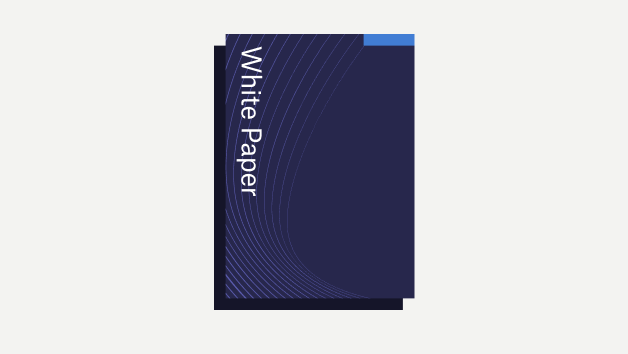A new debate has recently arisen in the wind turbine industry: is a retrofit worth the effort and will it bring value for money? With its ability to offer enhanced turbine control and decreased downtime, kk-electronic believes the question has already been answered.
Retrofit is the term widely used for exchanging one or more components in an existing turbine, or components related to the wind park. It is important to realise that a retrofit operation is not just a standard procedure. For some turbines, it might make sense to retrofit only the control system; for others it might be sensible to retrofit certain sensors; and, in some parks, the best option might actually be to retrofit the SCADA system.
For the Vestas V80 project, kk-electronic chose to retrofit everything related to the control system. This meant that the control of the hydraulic pitch system, the communication from nacelle to hub, the complete converter and, of course, the main control system were all retrofitted – to mention just some of the items which were involved in this process.
"First of all, it is crucial to set a goal," says Dorrit Zenner Torp, product manager at kk-electronic. "What is it that you want to achieve and is retrofitting your turbines actually the step to take?"
With the V80, kk-electronic wanted to open up the data access to the turbine in order to use new optimisation and development tools. "We wanted to try out some new technologies in the turbine," Torp explains, "as well as using new algorithms and optimisation techniques in the control loop.
"Of course, it requires full control of the turbine: access to all 4,000 data variables used in the control system in a very high resolution and, naturally, also access to all the software source code running in the turbine – this kind of access is not necessarily available from a turbine OEM," Torp smiles.
What can be achieved?
In the above case, the goal was to achieve complete control of the turbine, meaning access to all data, full control of the configuration and the ability to perform software optimisations via total software control. However, a driver for retrofitting a turbine does not necessarily have to be as dramatic as this. A simple case is the lack of spare parts from the turbine OEM, who might not even exist anymore, or a turbine owner with a very diverse fleet that wants to bring down its inventory costs. A more uniform inventory will lower the maintenance cost and the maintenance time.
For some turbines, it might be possible to gain some extra performance by optimising the power curve. More often, it is the availability of the turbine that can be improved in the retrofitted turbine, by optimising turbines for the specific site on which they are placed. In this case, the downtime can be reduced, and, even though the power curve is not changed, the yearly output will improve.
When a turbine is retrofitted, it is also possible to add new functionality that was not available in the original design. For example, adding a temperature sensor and letting the control system take action when a limit is reached provides the operator with new possibilities to act on conditions that are known from experience to lead to a failure in the turbine.
With older turbines, it might just be the larger data foundation that enables the operator to perform statistical analysis throughout the wind park that will justify a retrofit project.
What does a retrofit solution consist of?
The solution is heavily dependent upon what you want to achieve. The retrofit solution from kk-electronic consists of up to eight different main components used depending on the objectives.
The components are: the turbine main controller, power supply and station module, input/output (I/O) module, grid module with trigger functionality for thyristor control, data logger, HMI, park server (SCADA), and Turbine Optimised Tool Chain (software and developments tools).Each component supports the drivers of retrofit in different ways.
The data logger and park server support access to data, optimisation and lower maintenance time together with the possibility of making, for example, downtime analysis on a turbine and park basis.
The Turbine Optimised Tool Chain supports access to data, optimisation, configuration and lower downtime, together with the possibility to add sensors and functionality for a modern operation strategy. The embedded hardware modules support access to spare parts, lower maintenance costs, lower maintenance time and lower inventory costs, as well as the possibility to add new sensors.
When working with a retrofit solution, it is imperative that the solution is cost-effective. In a retrofit case with an older turbine, it will typically be possible to use just one I/O module to handle all the I/O in the turbine.
This is possible because the I/O module that kk-electronic provides for the retrofit is a multifunctional I/O board with a combination of analogue and digital inputs and outputs that fits most turbines. Having only one board minimises the risk of bringing the wrong spare part to the turbine and minimises inventory costs.
Each I/O has a measuring point and an LED to help the service technicians during fault findings. All connections are pluggable to support a quick replacement in the field if something is broken. The I/O module is connected via an optical fibre to eliminate electromagnetic compatibility (EMC) problems.
What is in it for me?
Whether your objective is to gain full control of your turbine, to optimise its performance, to reduce future maintenance costs or to mitigate the problem of getting spare parts, a retrofit project can help you to achieve your goal.
Whether it is worth the effort depends on the remaining lifetime and size of the turbine. "Comparing the benefits and the remaining life of the turbine with the relatively small effort of a retrofit project, the result is most often quite clear," concludes Torp.

